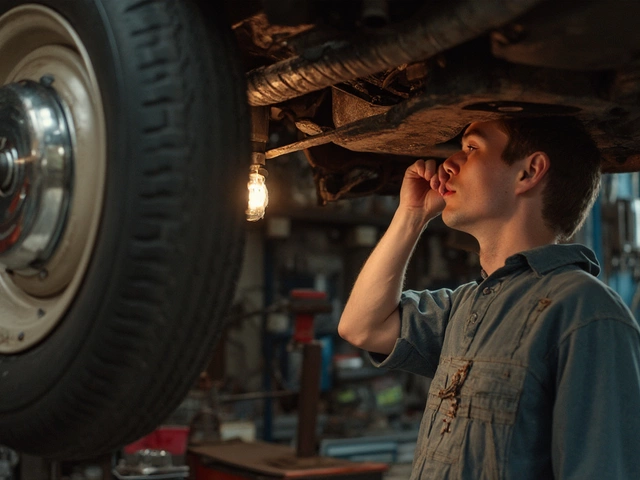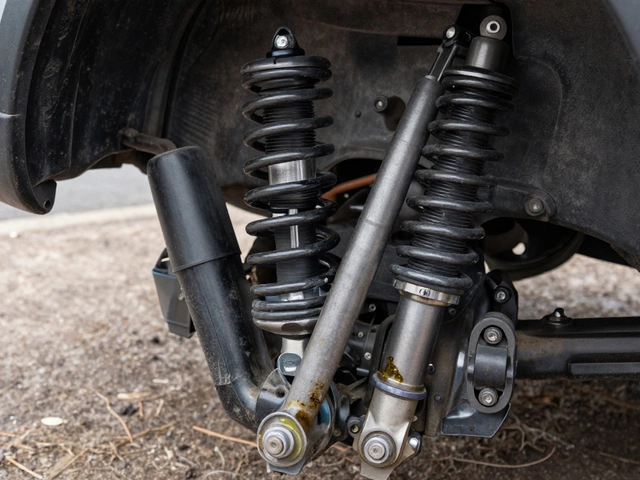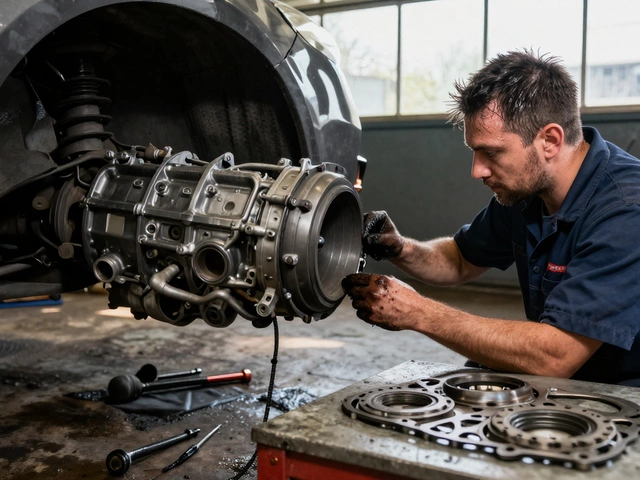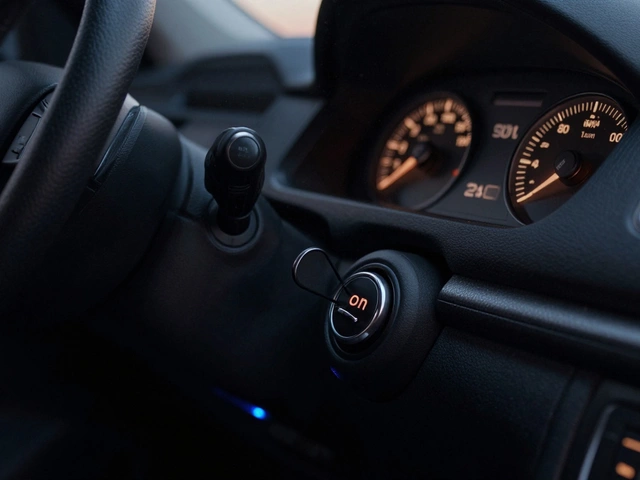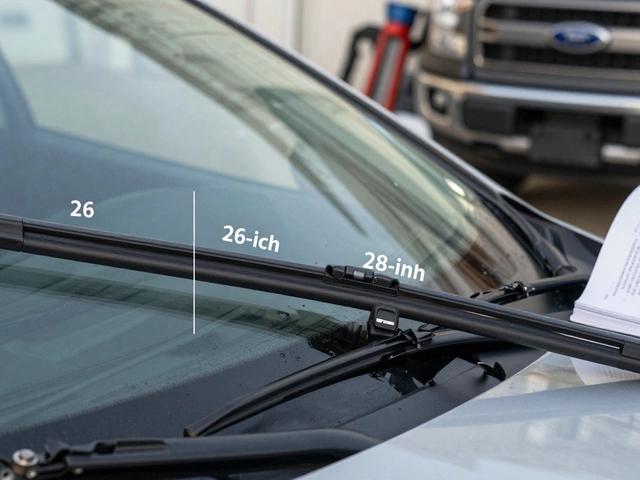Ever wondered why your car’s radiator might suddenly decide to stop working? Well, let’s unravel this mystery. Often, it’s not some grand mysterious problem but something more tangible. One of the usual suspects? Debris build-up. Over time, nasty little bits can accumulate and block the radiator’s delicate pathways, impairing its ability to cool your engine properly.
Let’s not forget about coolant issues either. It’s like neglecting self-care but for your car. Failing to keep up with coolant maintenance can lead to overheating and a radiator that’s just not up for the job anymore. If you’ve been using the wrong type or letting it run low, your radiator might be silently fuming.
- Debris Build-up and Blockages
- Poor Coolant Maintenance
- Wear and Tear Over Time
- Signs of a Failing Radiator
- Preventing Radiator Problems
- When to Seek Professional Help
Debris Build-up and Blockages
Your car's radiator isn’t just sitting there looking pretty. It's supposed to channel air through its fins to keep your engine cool. But that task gets way harder when it's clogged with dirt and debris. Imagine sipping a milkshake with a straw that's full of crumbs—frustrating, right? That’s what your car radiator experiences with debris build-up.
Leaves, dust, insects, and even road grime love to gather in your radiator like it’s social hour. And while each little bit seems harmless on its own, they can block air passages over time, transforming your radiator into a steaming mess.
How It Happens
You might’ve heard it before: “Park your car in a garage.” Why? Well, besides looking fancy, it protects your radiator from unwanted particles. Driving on dusty roads or through bugs? Expect your radiator to collect these souvenirs. Harsh seasons like autumn, when leaves are flying everywhere, add their own touch. Remember, it's not about one giant lump, but small accumulations.
Preventive Measures
- Regular Inspection: Get into the habit of checking your radiator. Look for any visible blockages and clean them gently with a brush or soft cloth.
- Keep Engine Hoses Tight: Leaky hoses can result in more than just coolant loss; they can let debris sneak in.
- Power Wash Carefully: Occasionally use a power washer at a safe distance to clear stubborn debris, but be cautious not to bend the cooling fins.
- Use a Radiator Screen: Though not common, some folks swear by adding a screen in front of the radiator to catch larger debris before it hits.
Understanding and addressing debris build-up goes a long way in preventing car radiator failure. Keeping your radiator in check ensures your car’s cooling system stays reliable, sparing you those unscheduled service visits. If ignored, these blockages aren’t just an inconvenience; they can lead to overheating, engine damage, and expensive repairs.
Poor Coolant Maintenance
If you've ever ignored coolant maintenance, you're missing out on one of the easiest ways to avoid a car radiator failure. Coolant, also known as antifreeze, does more than just keep your engine from overheating— it's critical for preventing corrosion and lubricating the internal components of the radiator and other elements of the cooling system.
Why Coolant Matters
Coolant isn’t just water with a fancy name. It’s a powerful fluid mixed with water and additives designed to regulate temperature. When coolant levels drop, or if it becomes contaminated, the radiator can suffer, leading to a breakdown in its ability to keep the engine cool. Using the wrong type of coolant can be just as damaging. It’s like putting diesel in a petrol engine—bad news.
How Often to Check Coolant
Checking and replacing your coolant is simpler than you might think. Here’s a rough schedule to keep in mind:
- Check the coolant level every couple of weeks. It should be between the minimum and maximum markers on the coolant reservoir.
- Flush and replace coolant every 30,000 miles, or as recommended in your car’s manual. Regular maintenance can prevent buildup and overheating.
- Inspect for leaks and contamination while you’re at it. Coolant should maintain its color without looking brown or cloudy.
Failing to upkeep proper coolant maintenance can lead to overheating—one of the prime reasons for a radiator failure that can leave you stranded when you least expect it.
Spot Common Issues Early
If you notice puddles under your car or a sweet smell coming from the engine bay, it’s time to check for leaks or inadequate coolant levels. A quick check-up can save you from a costly repair down the line. Using a coolant tester is an excellent way to ensure it's in good condition, ready to handle extreme temperatures.
In short, paying attention to your coolant is a small task with big benefits. Doesn’t it feel better knowing you can prevent serious radiator and engine problems with just a little TLC?
Wear and Tear Over Time
Your car’s radiator goes through a lot, just like a pair of well-loved sneakers. Over time, the constant cycle of heating and cooling can take a toll on this essential part of your car. It's like it's running a marathon every time you drive, dealing with high temperatures under the hood.
The materials that make up your car radiator—often aluminum and plastic—can degrade with exposure to coolant and the fluctuating temperature. It’s natural, but it means that eventually, parts might start to crack or leak, especially if routine maintenance isn’t a priority in your car’s life story.
There's also this thing called metal fatigue, pretty much metal getting tired from being stretched and compressed. Imagine bending a paperclip back and forth. Eventually, it snaps, right? That's a simple way to understand what might happen to your radiator over time. The wear and tear are real, folks!
Care Tips
- Regularly check your radiator for any visible signs of damage like cracks or obvious leaks.
- Have a look at hoses and connections too. These can become brittle and might need replacing before they become a bigger issue.
- Ensure proper coolant levels and quality. This helps manage heat and reduce stress on the radiator.
Remember, spotting these issues early can save you from bigger headaches—or worse—a steaming car on the side of the highway.
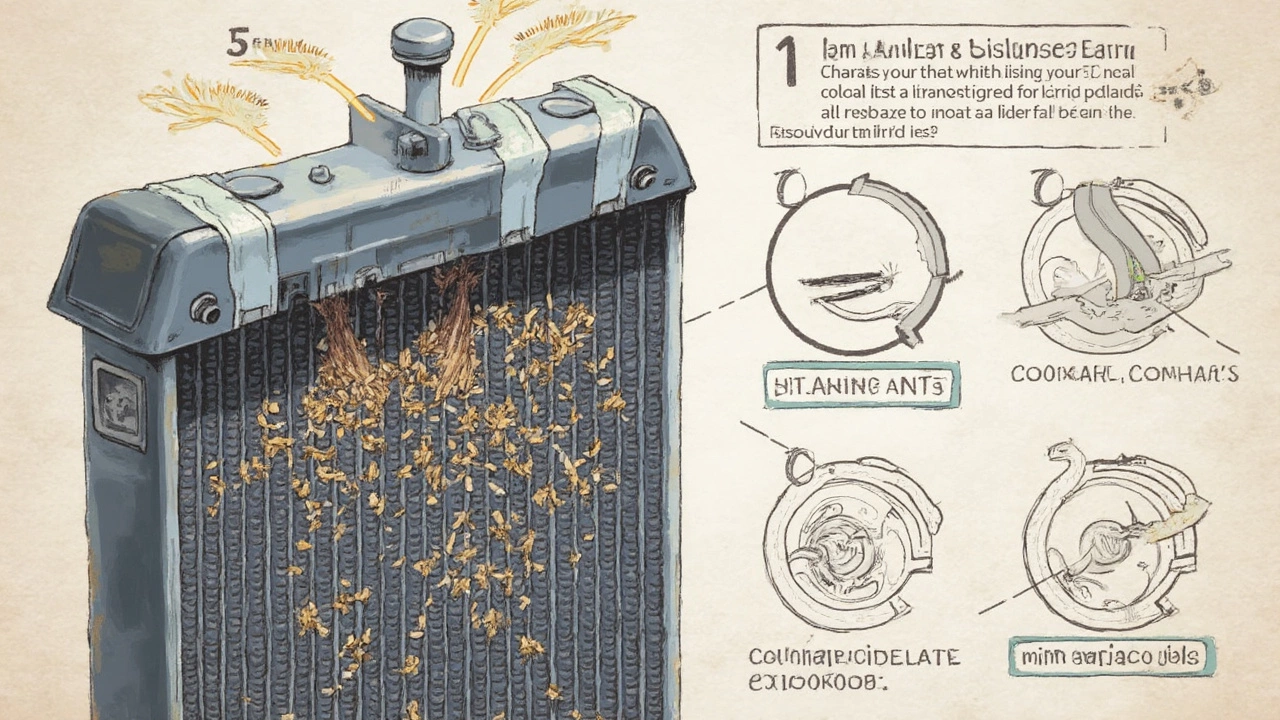
Signs of a Failing Radiator
Your car's radiator plays a crucial role in keeping everything under the hood running smoothly. But what if it starts to act up? Recognizing the signs early can save you from getting stranded on the roadside.
1. Overheating
One of the clearest signs of a car radiator failure is the car overheating. No brainer, right? If your temperature gauge starts creeping into the danger zone frequently, your radiator might not be doing its job properly. A healthy radiator should keep the engine cool even on the hottest days.
2. Leaks and Puddles
Spotting puddles under your car after it's been parked for a while? Check the color. If it's a bright, neon-like green or sometimes orange, that's coolant, and it shouldn’t be outside the tank. Leaks can indicate a crack or damage in the radiator itself or its connections.
3. Discolored Coolant
Your coolant maintenance routine also involves checking its color. Good, working coolant should be clear or slightly colored. If it looks rusty or has strange particles floating around, corrosion might be happening inside the radiator, which is a red flag for radiator issues.
4. Radiator Fins Looking Rough
Pop the hood and take a look at those radiator fins. They should be straight and intact. Bent or damaged fins can impede airflow, leading to less efficient cooling. Debris, or even a wayward rock, can do more harm than you’d think.
5. Temperature Fluctuations
Does your car's temperature randomly swing from hot to cold? That’s a potential sign of trouble. The cooling system, especially the radiator, may not be regulating effectively, thanks to either a blockage or air pockets in the cooling system.
A little attention to these signs can make a world of difference. You'll not only save yourself from expensive repairs but also ensure a smoother ride every time you hit the road.
Preventing Radiator Problems
Keeping your car radiator in tip-top shape doesn't have to be rocket science. With a little know-how and regular attention, you can avoid those pesky cooling system issues. Let’s dig into some handy tips that can keep your radiator running like a champ.
Regular Coolant Checks
Your car's radiator relies on coolant to keep the engine temperature in check. Make it a habit to check the coolant level regularly and top it up as needed. Remember, the right mix of water and antifreeze is key here. It’s not just about quantity but quality too. Always go for the coolant type recommended by your car's manufacturer.
Keep It Clean
A blocked radiator is like trying to breathe through a straw. Periodically inspect your radiator and remove any debris stuck in the fins. If you often drive through dusty or dirty areas, consider a thorough cleaning more often. Mind you, a gentle touch can help prevent bending those delicate fins.
Regular Inspections for Wear and Tear
Hose check-up time! Those rubber hoses that connect various parts of your cooling system can weaken over time. Look for cracks or bulges that signal it's time for a replacement. Similarly, keep an eye on the sealing caps—they should fit snugly and show no signs of rust or damage.
Flush the System
Flushing your radiator system isn’t just a nice-to-have; it’s essential. Aim for a flush every couple of years to remove any build-up of sediment or rust that might clog the system. Think of it as spring cleaning for your car's cooling system.
| Inspection Frequency | Action |
|---|---|
| Monthly | Check coolant levels |
| Quarterly | Inspect hoses and connections |
| Bi-annually | Flush the entire system |
By following these straightforward steps and being proactive, you can minimize the risk of your car radiator failure. Let’s face it, nobody wants to be stuck on the side of the road with steam pouring out of the hood.
When to Seek Professional Help
So your car radiator is acting up, and you're not sure whether it's time to call in a pro? It's a dilemma many car owners face. While some car cooling problems can be handled DIY style, knowing when to call a professional could save you from bigger headaches—and expenses—down the road.
Unusual Noises and Leaks
If you hear weird noises like a gurgling or constant bubbling, it's time to hit the brakes on your DIY skills. These sounds can hint at trapped air within the radiator, which is tough to handle without specialized equipment. Also, if you've noticed bright green or orange puddles under your car, don't ignore them. These leaks could indicate your radiator's trying to tell you something serious.
Persistent Overheating
Your car overheating once is one thing, but if it becomes a regular occurrence, don't just shrug it off. This could be a sign of deeper issues like a failing thermostat or a clogged radiator. These issues might sound simple, but they demand a pro's touch to avoid further damage to your engine.
- Regular overheating - Check for signs of steam and a spiking temperature gauge.
- Frequent leaks - You might need professional assessment to pinpoint the cause and fix it properly.
- Unusual noises - Gurgling sounds can indicate trapped air or coolant circulation problems.
Dashboard Warning Lights
Modern cars come with a handy dashboard warning system. If that little light comes on, it’s usually a clear shout-out for attention. It’s easy to dismiss, but a professional can interpret the codes to find out what's truly wrong with the car radiator. Ignoring it might just be an invitation for bigger issues.
DIY Attempts Didn't Work
We’ve all been there—tried a fix, only to meet more frustration. If refilling coolant or basic maintenance didn’t solve your radiator woes, it might be time to hand over the wrench. Professionals can provide thorough inspections and have the tools that the average Joe doesn't have stuffed in a home garage.
Remember, seeking professional help isn’t admitting defeat—it’s protecting your ride and your wallet in the long run.

